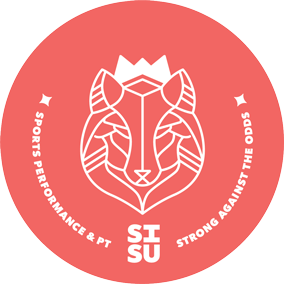I’ve got a beef with clamshells (the exercise, not the actual shell of a clam)

What I can’t seem to comprehend, is the value of the clamshell itself, and why anyone would spend more than one session teaching someone how to perform this exercise.
At the moment, I liken the clamshell exercise to lettuce. If you’re not sure what this exercise is, google knows and there’s no doubt you’ll find a billion different ways to do it. As you would with any exercise.
The clamshell exercise might indeed be important and valuable for some. But here’s the thing, you probably get more bang for your buck with something like spinach or kale. And on top of that, spinach and kale taste better (this is my opinion of course and you may disagree, but hopefully you see where I’m going with this).
The clamshell exercise is the lettuce of my profession. Bland. Boring. Watery. Not worth the hype.
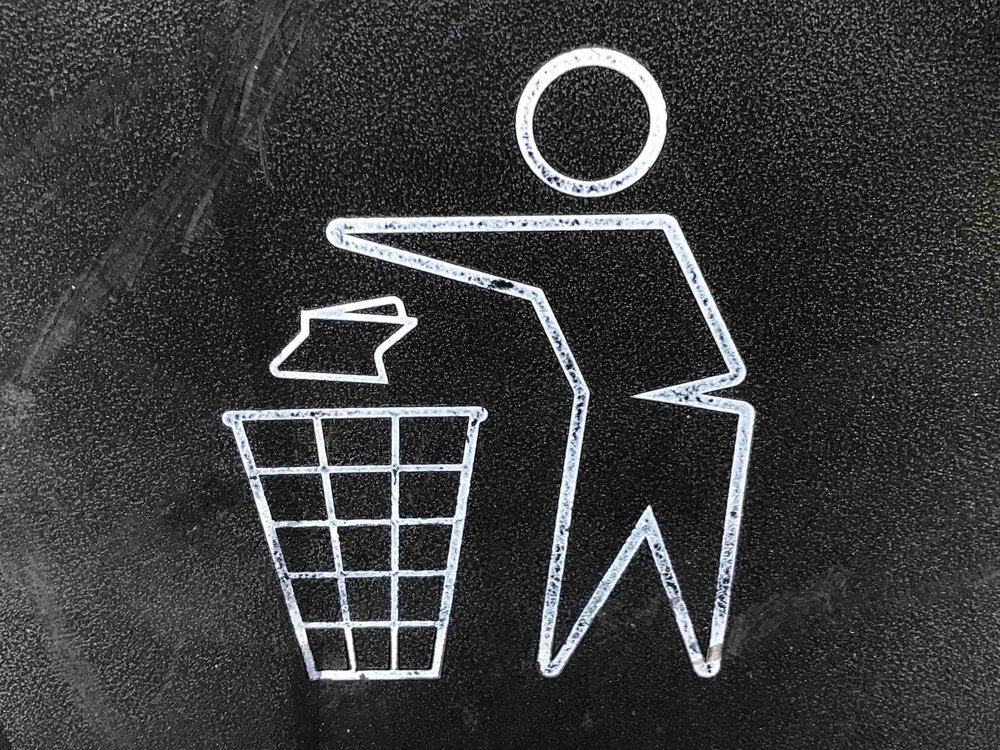
Much to my chagrin, I have to admit to having been previously obsessed with this exercise. It was a “go-to” for any injury below the level of the belly button. I’ve taught it to many people and I’ve used it on many occasions. I am not immune to the pitfalls of exercise prescription. I am, on the other hand, flexible to change and I lean in to the new things I learn as much as I can. As such, with everything new I know about helping people through recovery, the clamshell exercise has become my newest piece of garbage, that likely needs to be thrown out.
So why do we (physical therapists, chiros, “rehab specialists”) insist on using this exercise over, and over, and over again? I have theories, but I did some digging and came up with blanks because I got really sidetracked by..oh, I don’t know…RECENT science and evidence.
Before I dive into some of that research, I ask folks to reflect: How long have you been doing this exercise? And is it really helping?
In 2017 Ebert and Colleagues published a systematic review looking at exercises to progressively overload the gluteus medius [1].

I think it’s important to ask; WHY does the glute med matter in isolation? Not only are we obsessed with clamshells, but we are obsessed with this muscle! Why?
I don’t really have answers for you in that regard, only theories, and those theories have a lot to do with information we came to know through EMG (electromyography) and %MVIC (maximal volitional isometric contraction) studies. Most of which have some serious flaws. Particularly when it comes to controlling the performance of one particular exercise (ie. how the exercise is performed).
Let’s take the single leg deadlift as an example. In a study done by Distefano et al, the single leg deadlift looked like the photo below on the left [2].
If you’re not familiar with some basic understanding of movement, a single leg deadlift tends to maximize the activation of your glutes, if you perform a hinging motion at the hips and the hinge looks more like the photo below on the right. Hopefully you can see the difference.
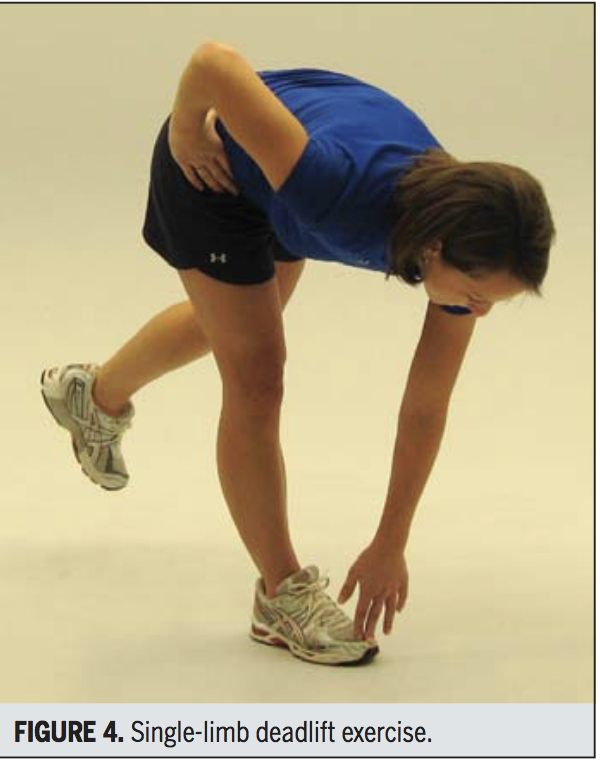
Single leg deadlift Distefano version
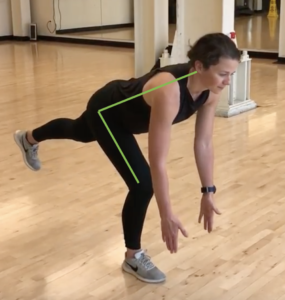
Single leg deadlift with hip hinge
There’s nothing particularly wrong with the movement being performed above on the left, but it doesn’t actually foster using the glute muscles as the primary movers of the exercise. So yeah, some problems with simple understanding of HOW to perform an exercise that maximizes contraction of the glute muscles. That is an issue, with studies like this.
In 2011, Reinman et al did a literature review of studies evaluating gluteus maximus and gluteus medius activation during “rehabilitation” exercises (and why the heck is there a separate category for “rehab” exercises? Aren’t they just exercises?) [3].
Below are the results:
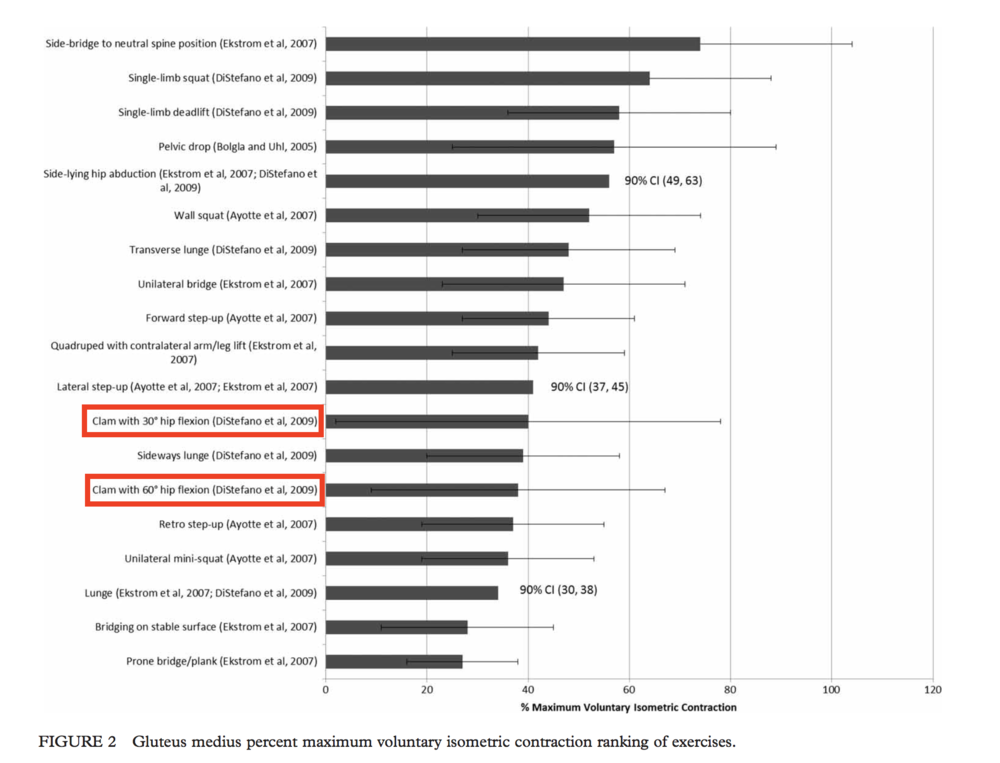
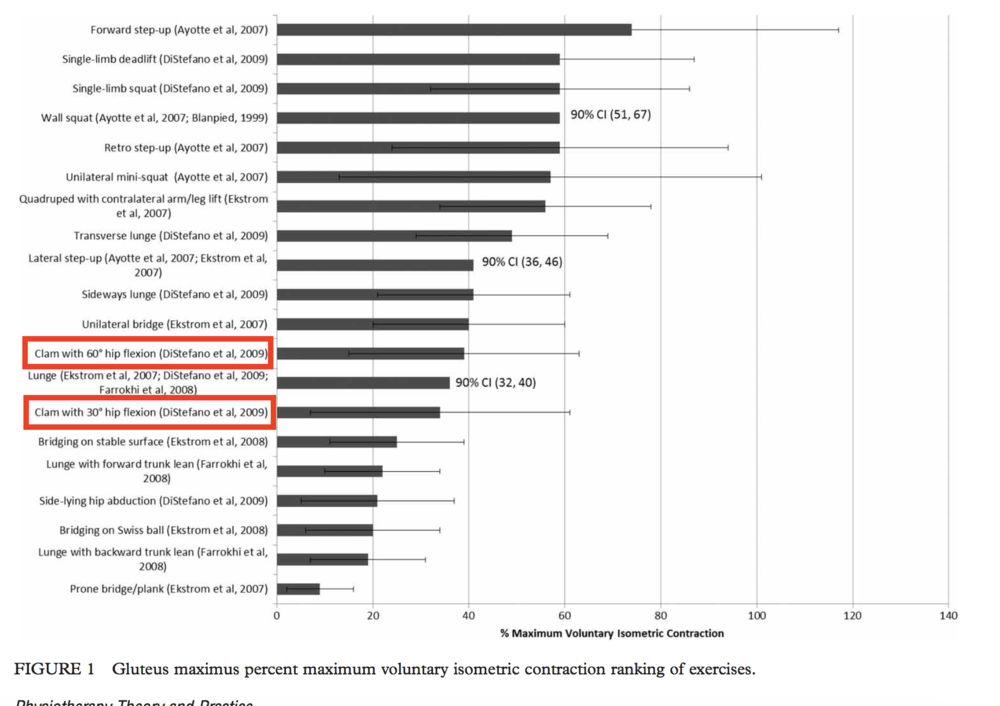
If you’re having trouble reading that, that’s fine. Because All you need to see are that there are a plethora of other exercises that will do more “activating” of your glutes than the clamshell. Two clamshell variations are highlighted in red boxes.
Oh but wait, there was a study published in JOSPT in 2013 looking at which exercises might limit the activation of the TFL (tensor fascia lata) [4]. For those of you that don’t know where this muscle is, that’s fine, you don’t really need to know. It’s near the hip.
Anyway, they determined that the clamshells might be a sufficient exercise to use in rehab to prevent use of the TFL [4].
I feel like it is appropriate to ask, WHY does that EVEN matter? Oh and the kicker? There were only 20 people in that study….TWENTY PEOPLE!
While it is absolutely clear to me that the clamshell exercise activates the glutes in some capacity, I cannot fathom why you wouldn’t progress a person away from this exercise fairly quickly. Particularly, when we consider the demands of athletic maneuvers or even simply human maneuvers.
So yeah, my beef with the clamshell, has more to do with the assumption that this exercise has some sort of “magic” powers that heals all lower extremity and lower back injuries or pain. And this, put simply, is not true.
So below, I’ve included videos of some of the exercises, found in the literature, that do a “better job” of activating the glutes than the clamshells. There are low level options and higher level options. Because I’m not a fool. I KNOW that loading can be precarious for some individuals post-op, post injury, with fear avoidance, what have you. So I got fancy, and added a few progressions!
I also, added a few more exercises that I, personally, quite appreciate for additional hip strengthening and progression into more loaded and challenging exercises for athletes with knee pain, hip pain, ankle pain and back pain. I might add, that these exercises hardly scratch the surface on ways you can load the glute muscles. The possibilities are endless.
So this is my call to ditch the clamshell. Try something new. Challenge yourself or challenge your patients. There are a lot of different ways that we can foster hip strengthening that might engage not only the glutes, but ourselves or our clients.
Check it out below.
Cheers,
Dr. Ellie Somers, PT
“Physio on a mission”
Research supported exercises:
-
Single leg squat variations:
-
Bridge variations:
-
Single leg deadlift variations:
Some of my personal favorites (in no particular order):
Reference list:
1. Ebert JR, Edwards PK, Fick DP, Janes GC. A Systematic Review of Rehabilitation Exercises to Progressively Load the Gluteus Medius. J Sport Rehabil. 2017;26: 418–436.
2. Distefano LJ, Troy Blackburn J, Marshall SW, Padua DA. Gluteal Muscle Activation During Common Therapeutic Exercises. J Orthop Sports Phys Ther. 2009;39: 532–540.
3. Reiman MP, Bolgla LA, Loudon JK. A literature review of studies evaluating gluteus maximus and gluteus medius activation during rehabilitation exercises. Physiother Theory Pract. 2012;28: 257–268.
4. Selkowitz DM, Beneck GJ, Powers CM. Which exercises target the gluteal muscles while minimizing activation of the tensor fascia lata? Electromyographic assessment using fine-wire electrodes. J Orthop Sports Phys Ther. 2013;43: 54–64.
Sisu Sports Performance & PT is accepting new clients!! Feel free to send me an email or schedule an appointment today!

